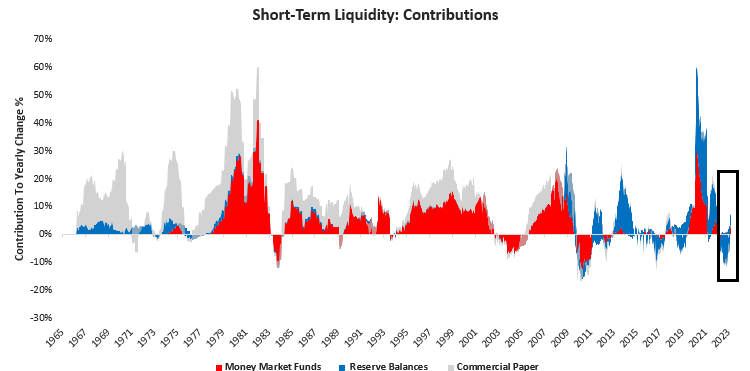Liquidity: Improved, By Likely Unsustainable
Welcome to The Observatory. The Observatory is how we at Prometheus monitor the evolution of the economy and financial markets in real-time. The insights provided here are slivers of our research process that are integrated algorithmically into our systems to create rules-based portfolios.
Some of the most significant and complicating factors to the current market picture have been the cross-currents in the liquidity ecosystem. The most recent data suggests that there has been a modest improvement in short-term liquid instruments over the last few weeks. Below, we show our tracking of several key short-term storeholds of liquidity. This does not comprise all potential sources of liquidity but includes those that are particularly relevant to the financial system and markets, i.e., reserve balances, money market funds, and commercial paper:
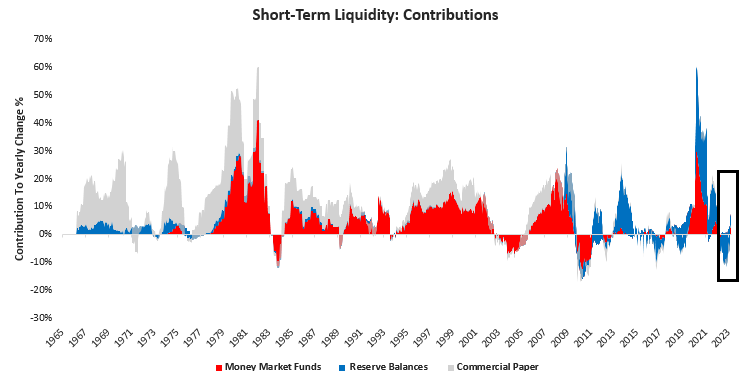
As shown above, these measures have improved significantly from last year’s declines. This improvement was driven by a significant increase in money market fund inflows and a slowdown in reserve contraction at the Federal Reserve. Below, we show how a combination of households and corporates inflows have typically dominated these money market flows:
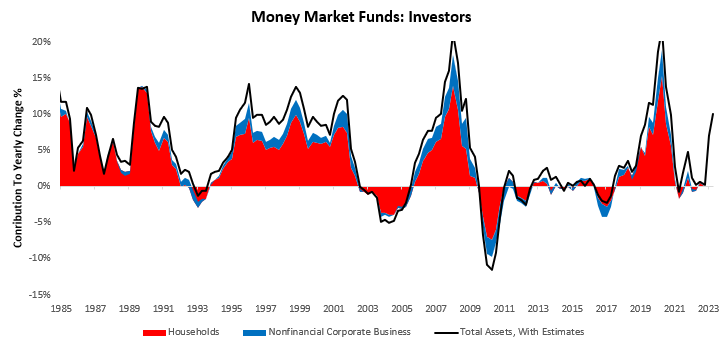
Households and corporate recycle their savings into financial assets. Depending on the economic environment, they choose between highly liquid investments with minimal returns and less-liquid assets with higher returns. The nominal gains of this economic cycle have primarily found their way into the former, i.e., highly-liquid, risk-averse, short-term instruments like money markets funds. These inflows support future economic and market activity, as when conditions warrant, these cash balances can easily migrate to risk-taking activity. What is essential to recognize is that these flows are a function of the profit and income activity in the economy. As we get further into a profit contraction, the flows into these products will also dwindle. Below, we show how S&P 500 profitability has entered contractionary territory:
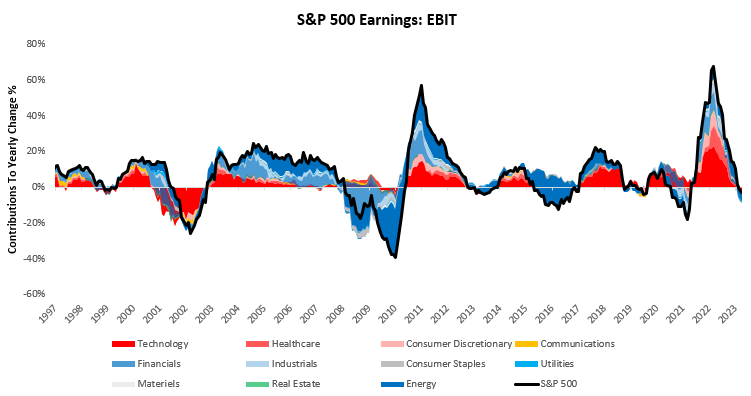
While profits have contracted, somewhat higher personal savings have offset these declines. These savings are the primary source of inflows into money market funds. We show this modest improvement in savings below:
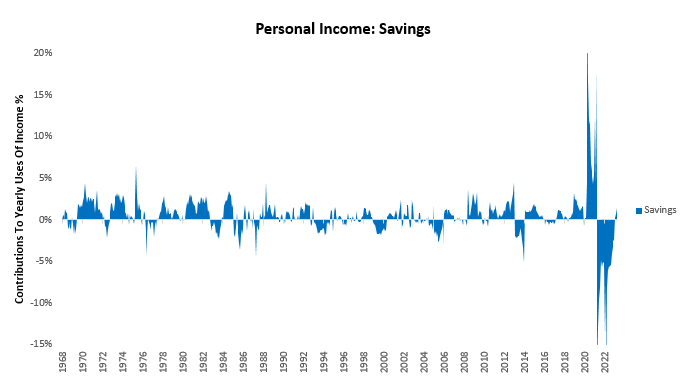
We now turn to the next driver of the current liquidity environment, the Federal Reserve and its balance sheet policy. Below, we show the big-picture drivers of the Fed’s assets (Treasuries & MBS) and liabilities ( Treasury Account, Reverse Repo Facility & Reserve Balances). Positive values are assets, whereas negative values are liabilities:
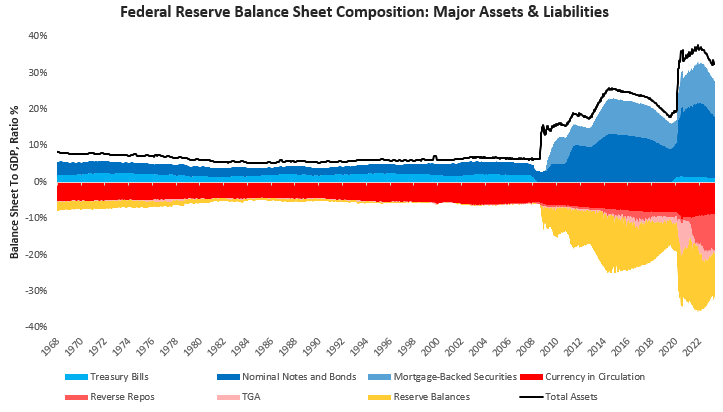
It is well known that the Fed is attempting to contract its balance sheet and increase interest rates to contain inflation. However, the path to balance sheet contraction has been bumpy as the severity of liquidity withdrawal has caused issues in the banking systems, forcing the Fed to perform emergency operations that increase liquidity in the financial system. Over the last quarter, the Fed assets have increased by 1.4%:
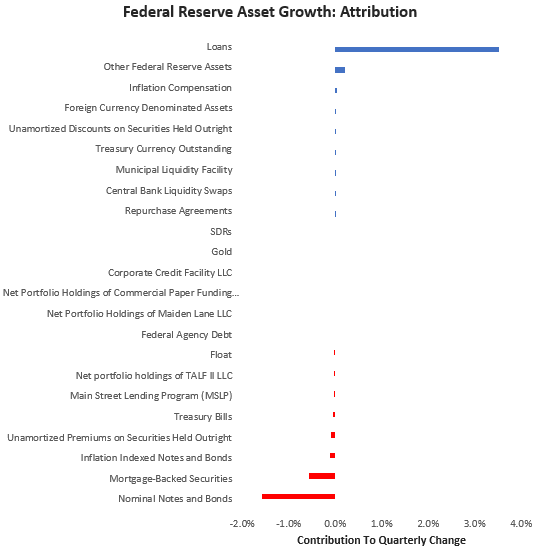
As we can see above, while the Fed has continued to reduce its Treasury & MBS holdings, emergency loans have increased the size of the balance sheet over the past quarter. Alongside this change in assets, we have seen liabilities (ex-reserves) roughly flat. Below, we show the composition of the changes in liabilities:
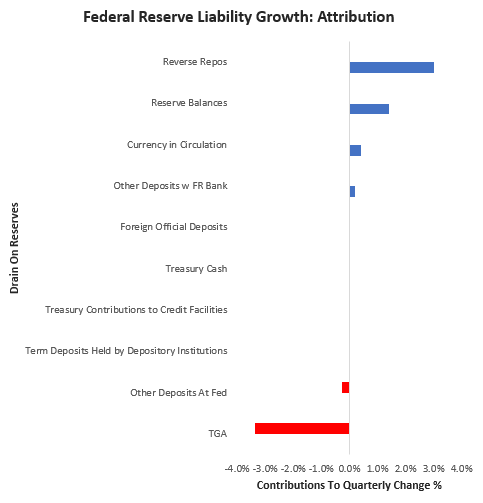
As the debt ceiling debate continues, this flatling of liabilities ex-reserves was primarily driven by significant spending from the Treasury General Account at the Fed. These factors led to a meaningful increase in reserve balances over the last quarter. The change in reserve balances is the critical determinant of how much the Federal Reserve’s balance sheet reduction impacts financial markets. Reserve balances are determined by the level of the Fed’s assets net of their other liabilities. Below, we show how assets and liabilities have come together to drive reserves over the last quarter:
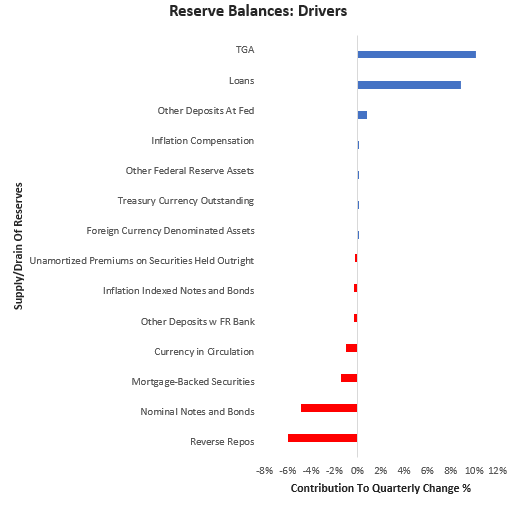
Looking ahead, without a sustained debt ceiling problem and sustained loan expansion to the private sector we think it is essential to consider that reserve balances will likely resume their downward path as the Fed attempts to control financial conditions. This remains a significant headwind for liquidity.
Finally, we turn to commercial paper, where we see the most softening over the last quarter. However, commercial paper changes have not been adequate to overpower the changes in money markets and reserves. Below, we show the yearly changes and composition of commercial paper markets:
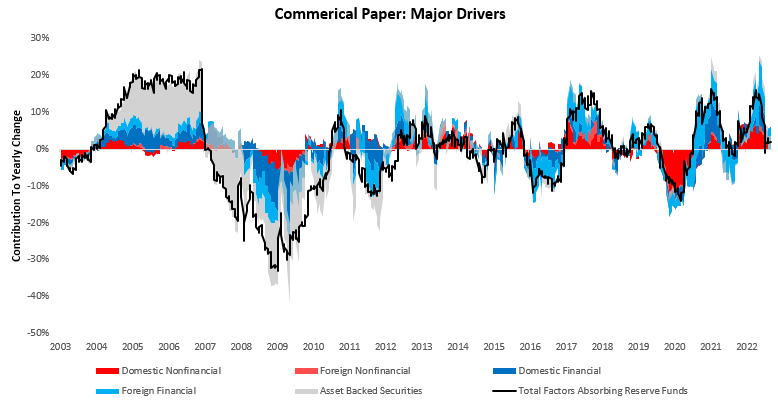
Zooming into the most recent quarter, we see significant weakness in financial sector commercial paper issuance, which is consistent with funding stress within the sector:
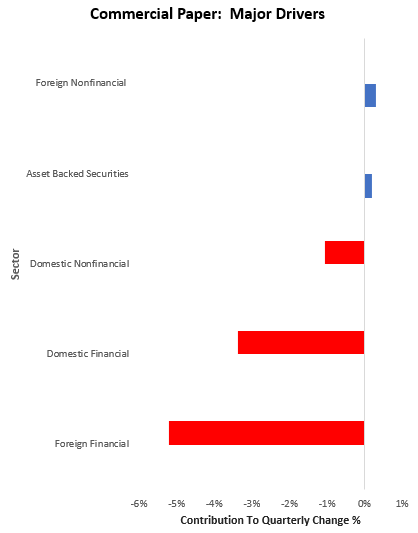
Overall, the liquidity picture remains supported by strong nominal incomes in the economy and moderation in the pace of the Fed’s tightening. Given the cyclical pressures present in the economy today, it is hard to see these dynamics persisting. Additionally, the more money market inflows persist through high nominal activity, the more the Fed will have to curtail liquidity. Therefore, while liquidity has improved due to these dynamics, it is unlikely to be sustained by them. This is a headwind for assets. Until next time.

